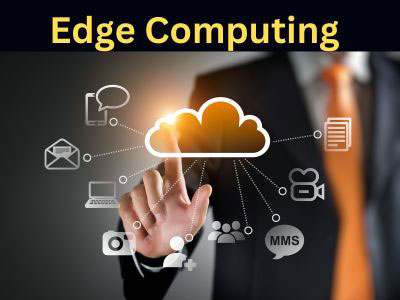What Are The 5 Benefits Of Edge Computing?
Key Takeaway
The five benefits of edge computing include reduced latency, enhanced data privacy, cost savings, improved reliability, and scalability. By processing data closer to its source, edge computing minimizes delays, enabling real-time decision-making critical for applications like autonomous vehicles and IoT devices. This localized approach also enhances data security by reducing exposure during transmission.
Additionally, edge computing optimizes bandwidth usage, leading to significant cost savings. It ensures consistent reliability, especially in remote or disconnected locations where continuous operations are crucial. Finally, its scalability and flexibility allow businesses to adapt to growing data needs efficiently, making it a game-changer for industries relying on dynamic and distributed systems.
Reduced Latency and Real-Time Decision Making
Edge computing drastically reduces latency, enabling real-time decision-making. Traditional cloud systems often require data to travel significant distances to centralized servers, leading to delays. In contrast, edge computing processes data closer to its source, ensuring faster responses. Imagine an autonomous vehicle: milliseconds matter in detecting and reacting to obstacles. Edge computing ensures these critical decisions happen instantly.
Moreover, industries like manufacturing and healthcare benefit immensely. In industrial automation, real-time adjustments prevent costly downtimes, while in healthcare, immediate data processing can save lives during critical surgeries or remote diagnostics. This proximity to the data source eliminates lag, enhancing the performance of applications that demand low latency.
As IoT devices proliferate, the need for instantaneous responses grows. Whether it’s a smart thermostat adjusting room temperature or a drone performing precise deliveries, edge computing guarantees seamless operations without interruptions caused by latency.

Enhanced Data Privacy and Security
Data privacy and security are paramount in today’s interconnected world. Edge computing enhances both by processing sensitive information locally rather than transmitting it to central servers. This localized approach reduces exposure to potential cyberattacks during data transit. For example, a smart home security system processes video footage on-site, minimizing the risk of breaches.
In industries handling sensitive information, such as finance and healthcare, edge computing provides an added layer of protection. Patient data or financial transactions processed at the edge are less vulnerable to interception compared to centralized systems. This localized processing also aligns with compliance requirements like GDPR, which mandate stricter data handling protocols.
Additionally, edge devices can implement robust encryption and security protocols tailored to specific use cases. By reducing reliance on centralized data hubs, businesses mitigate risks and build trust with their customers, ensuring that private data stays private.
Lower Bandwidth Usage and Cost Savings
Edge computing significantly reduces bandwidth usage, leading to substantial cost savings. Traditional cloud systems require large amounts of data to be transmitted to and from centralized servers. This constant back-and-forth consumes significant bandwidth, driving up operational costs, especially for data-heavy applications like video streaming or IoT analytics.
With edge computing, only the most critical data is sent to the cloud, while less important information is processed locally. For instance, a smart factory’s edge devices analyze machine performance in real time and only send aggregated insights to the central server. This reduces bandwidth needs and cuts costs associated with data transmission.
Furthermore, businesses operating in areas with limited or expensive network infrastructure benefit immensely. By minimizing data transfer, edge computing ensures smoother operations while keeping costs manageable. Over time, these savings can be reinvested into scaling or improving other aspects of the business.
Improved Reliability in Remote Operations
Reliability is a cornerstone of effective operations, especially in remote or challenging environments. Edge computing excels in such scenarios by ensuring uninterrupted functionality even when network connectivity is unstable or unavailable. Take oil rigs or remote mining operations, for example—constant data processing at the edge ensures systems continue to function seamlessly.
In agriculture, edge-enabled systems manage irrigation, soil analysis, and crop monitoring in remote fields without relying on an always-available internet connection. This independence ensures that operations remain consistent, regardless of network disruptions.
Furthermore, edge computing improves system resilience by decentralizing operations. If one edge node fails, others can continue processing, ensuring minimal downtime. This reliability makes edge computing indispensable for industries requiring continuous operations, safeguarding productivity and preventing costly interruptions.
Scalability and Flexibility in Deployments
Scalability and flexibility are critical as businesses grow and evolve. Edge computing provides unparalleled adaptability, enabling organizations to expand their infrastructure without overhauling existing systems. This modular approach allows businesses to deploy additional edge nodes as needed, ensuring seamless scaling.
Consider a retail chain expanding to new locations. With edge computing, each store can operate its local data processing independently, reducing reliance on centralized servers. This flexibility extends to IoT deployments, where businesses can integrate new devices without straining their network.
Moreover, edge computing supports hybrid models, combining cloud and edge solutions for optimal efficiency. Organizations can tailor their setups to meet specific demands, whether prioritizing speed, cost, or security. This adaptability ensures that edge computing solutions remain relevant and effective as business needs change.
Conclusion
Edge computing transforms the way businesses operate, offering reduced latency, enhanced security, cost efficiency, improved reliability, and unparalleled scalability. By bringing data processing closer to its source, edge computing empowers industries to make real-time decisions, safeguard sensitive information, and optimize costs. As technology continues to evolve, adopting edge computing is no longer a luxury but a necessity for businesses aiming to stay competitive and innovative.

